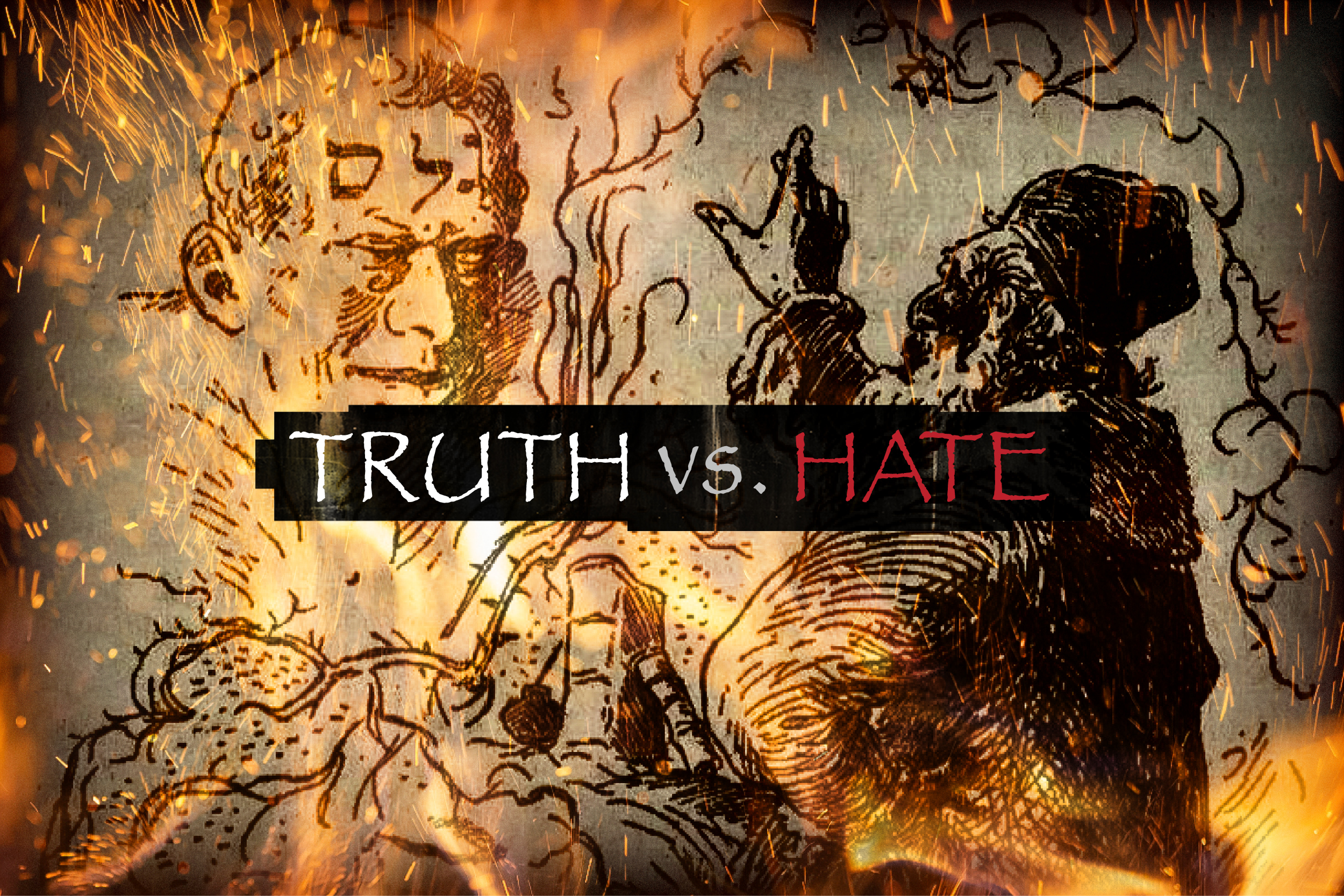
-
HOME
-
WHAT IS STANDOur Mission Our Values Our Help Contact
-
WHAT WE FIGHT FORReligious Freedom Religious Literacy Equality & Human Rights Inclusion & Respect Free Speech Responsible Journalism Corporate Accountability
-
RESOURCESExpert Studies Landmark Decisions White Papers FAQs David Miscavige Religious Freedom Resource Center Freedom of Religion & Human Rights Topic Index Priest-Penitent Privilege Islamophobia
-
HATE MONITORBiased Media Propagandists Hatemongers False Experts Hate Monitor Blog
-
NEWSROOMNews Media Watch Videos Blog
-
TAKE ACTIONCombat Hate & Discrimination Champion Freedom of Religion Demand Accountability
The Opposite of Truth Is Hate
Based on what I was taught in Hebrew school, it wasn’t a story but something that really happened: In Prague in the late 1500s, Rabbi Judah Loew ben Bezalel, sick of the abuse and torment the Jewish people had endured for so long, had a unique idea. Using a blend of supernatural and spiritual skills, he fashioned a clay giant—a man-made superman, 10-feet tall, possessed of limitless strength and indestructible. He called his creation golem—a Hebrew word that means “raw material,” implying a nonhuman thing possessing no spirit of its own.

He brought the monster to life by writing a single word—Emet—the Hebrew word for “truth”—on its forehead. Commanding it to fight for the Jews any time and any place where they were threatened, he released the golem.
From there, fact and fancy blur. According to the version I learned, the golem, after single-handedly vanquishing the children of Israel’s enemies, went out of control and began destroying the innocent along with the guilty. The power of Emet—truth—which had endowed it with life had been corrupted by violence and the monster, having tasted blood, had learned hate and now craved it, lusted after it, and like an addict and his fix, could not survive without it.
Hate comes from the lie that we are different, that certain people are inherently better than “other” people.
Rabbi Loew, horror-struck at what he’d created, hunted the golem and found it after many weeks. As the monster wrapped its arms around him in a death grip, the rabbi reached up to its forehead and wiped away the first letter of Emet, changing it to Met—death. And with that, the giant reverted to lifeless clay. The story goes that the rabbi then broke the golem into pieces and shut it in the loft of the Old New Synagogue of Prague where it remains to this day. The loft remains locked and closed to the public.
Over the centuries, the golem legend has taken on a kaleidoscope of meanings, far more than a Frankenstein’s monster or a Terminator. The Orthodox denomination of Judaism in which I was raised treats the legend as absolute historical fact and, furthermore, teaches that the day will come when the golem is needed and will once more come to life.
My takeaway from the golem fable—as I watch with distress the normalization of hatred, the skyrocketing antisemitic incidents, and celebrations of the current carnage in the Middle East—is that the opposite of truth is not falsehood, but hate.
It was the power of truth that gave life to inanimate clay. It was the taste of blood that created hate in its stone heart and which led to its death.
The truth is the obvious. What is the obvious? That we are all children of God, possessing by the simple fact of being human, the right to life, the right to love and the right to believe what we wish. Truth brings freedom and light and life. It is, in fact, so powerful that it can give life to the lifeless, as it did to the golem. When you learn the truth about something—anything—or about someone—anyone—you are that much more empowered, even if that truth was something you didn’t want to know. In the long run, you’re better off knowing than not knowing.
They have long since traded their life-giving powers for the addictive drug of hate.
Hate is the product of reversing the truth. It is also obvious. Hate comes from the lie that we are different, that certain people are inherently better than “other” people, and that these “others” are undesirable, filthy, subhuman, undeserving of life. And just as truth can bring about life, the spawn of hate is death. When you hate something—anything—or someone—anyone—you are driven, as the golem was, to destroy that thing or that person. Far from empowered, you are entrapped by the lies that led you to hate. And in the long run the hater is feeble and weak as he can only bring about death.
Haters such as bigots-for-profit Leah Remini, Mike Rinder and Tony Ortega subsist (one can’t really say “live”) on lies. If one cares to imbibe their venom, it doesn’t energize or re-animate, but only inflames. They have long since traded their life-giving powers for the addictive drug of hate. And like any drug, the obsession with hate leads to catastrophic results for the user and for anyone in his path. Just as it did with the golem.
The writer Adam Mansbach advises that we each become our own golem, ready always to pounce and attack the attacker, but then decommissioned instantly once the threat has passed. In this way, we have the golem’s strength but retain our own humanity and capacity for mercy.
Taking his cue from the word scrawled on the golem’s forehead he writes, “The opposite of truth is death.”
More precisely, I would venture, the opposite of truth is hate. It was hate that led the golem on its rampage, just as hate and its lies lead us to our failings, our crimes, our wars that bring shame to our species. But here is where Mansbach was right: hate and death are interchangeable. And truth and life are also interchangeable.
So the opposite of truth is hate.
The truth sets you free.
Hate only kills you—and others.









